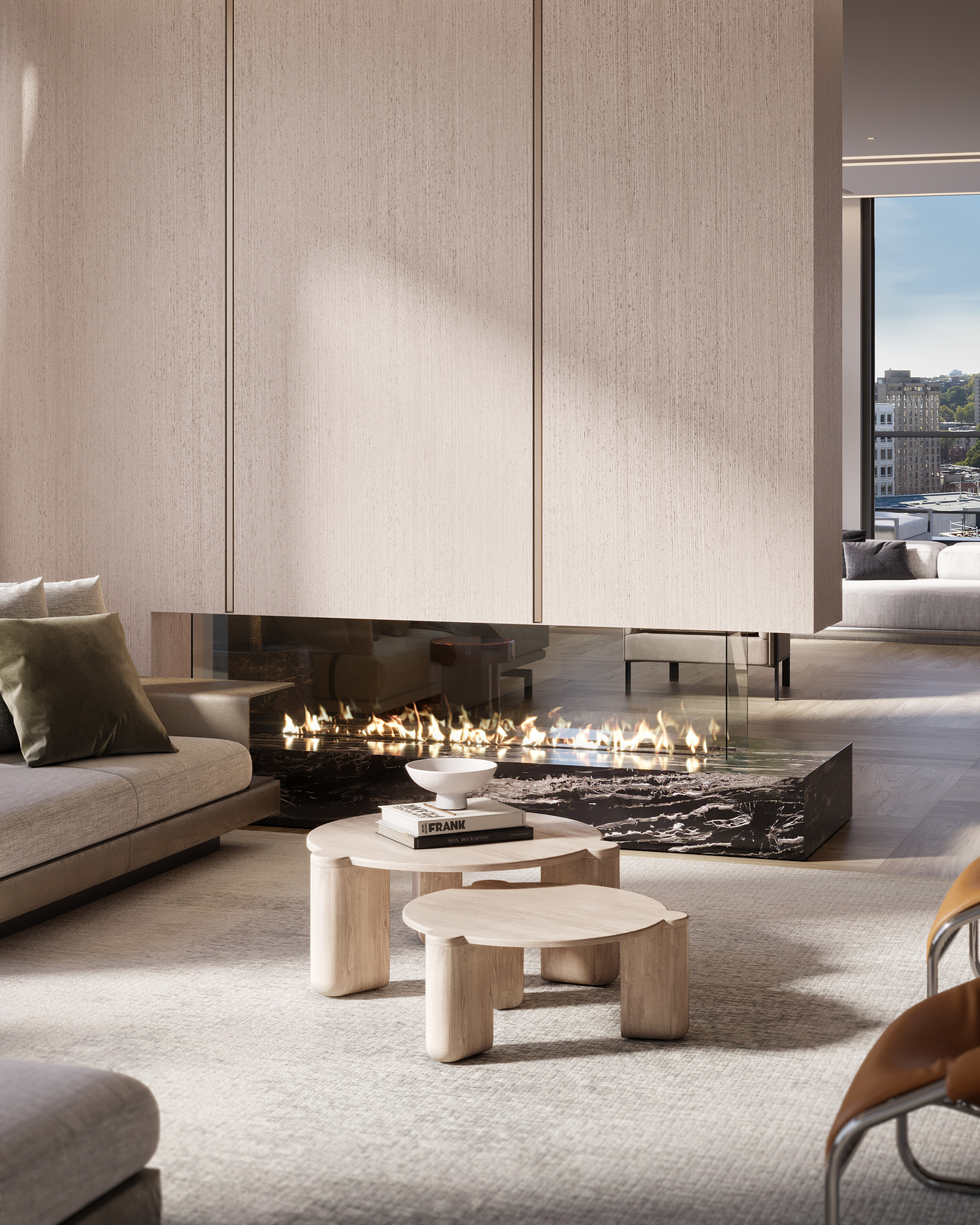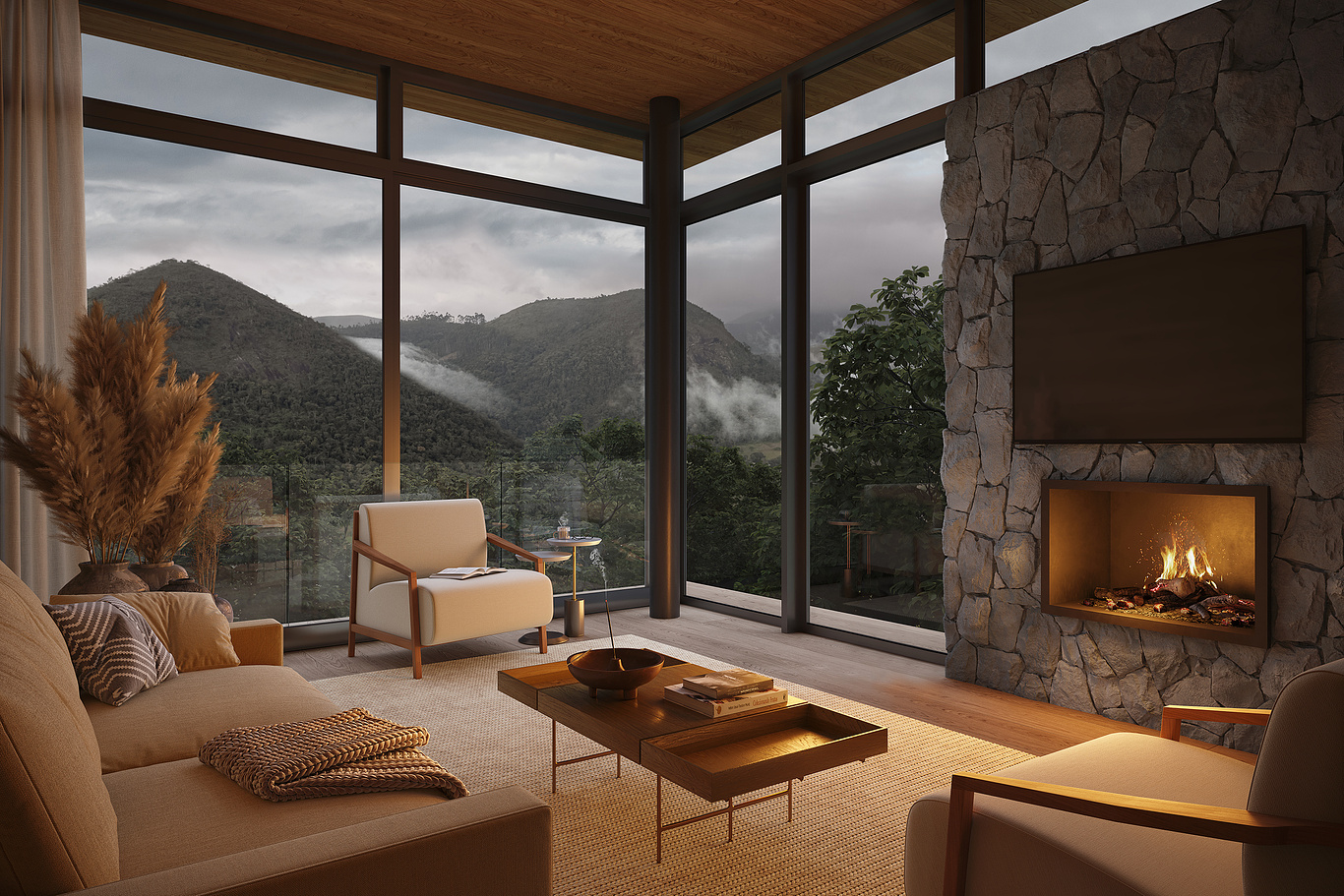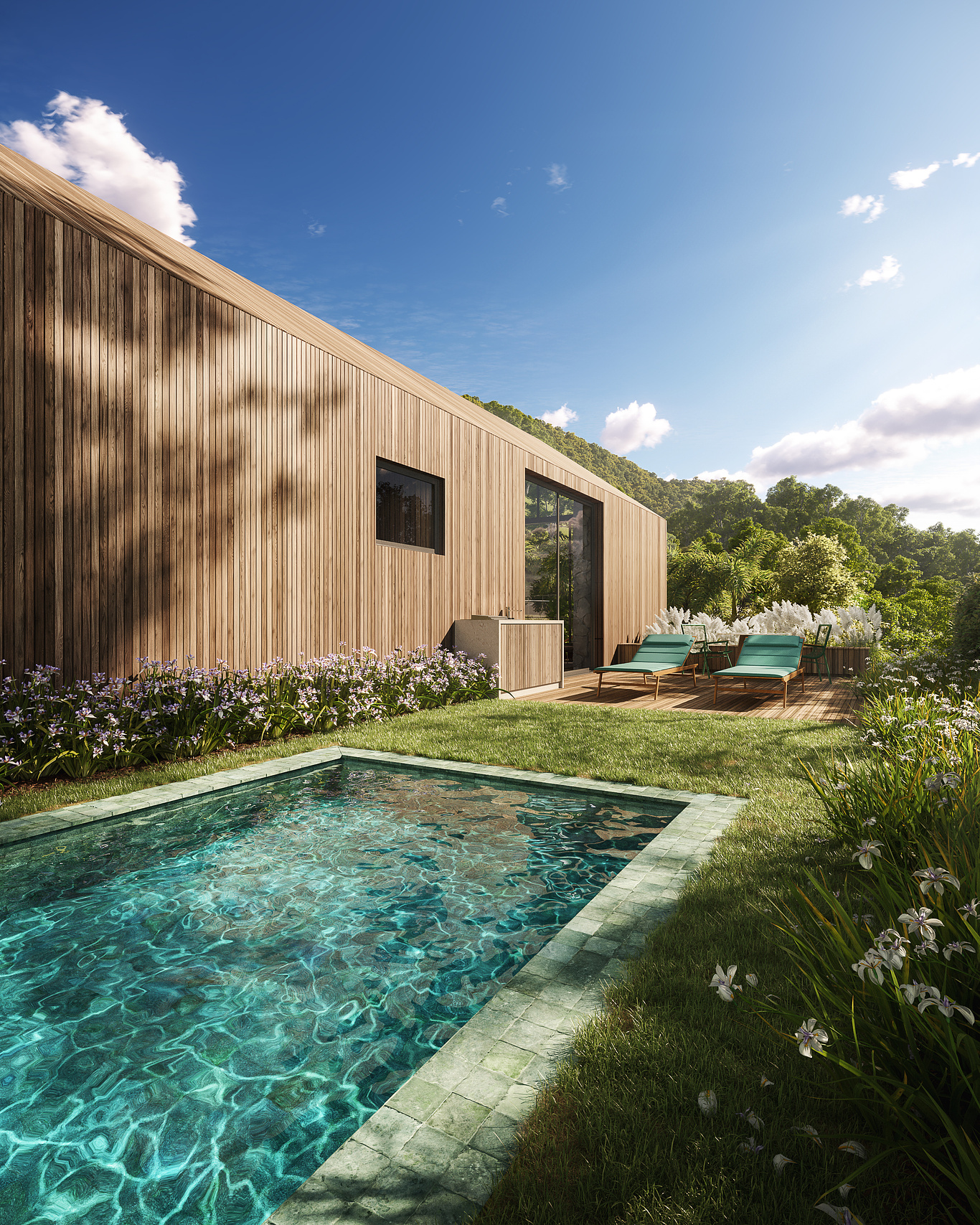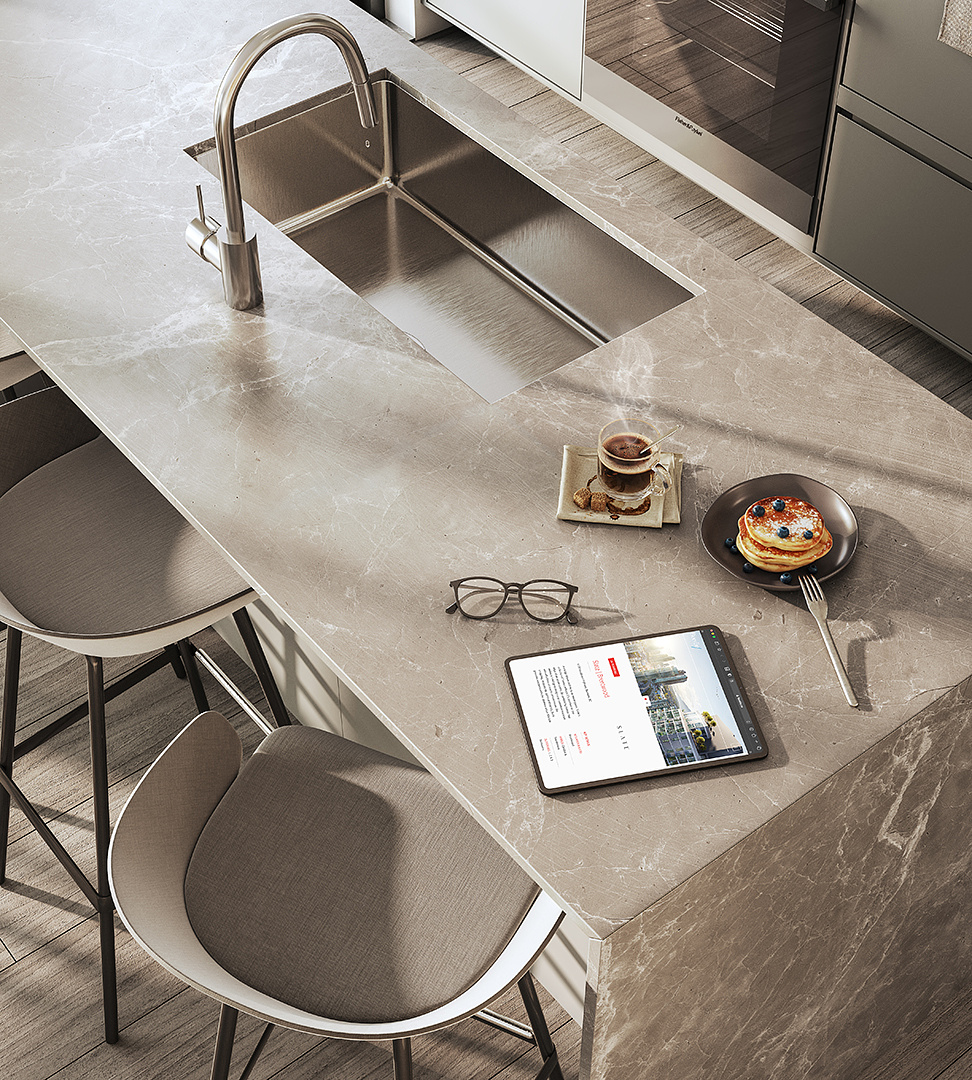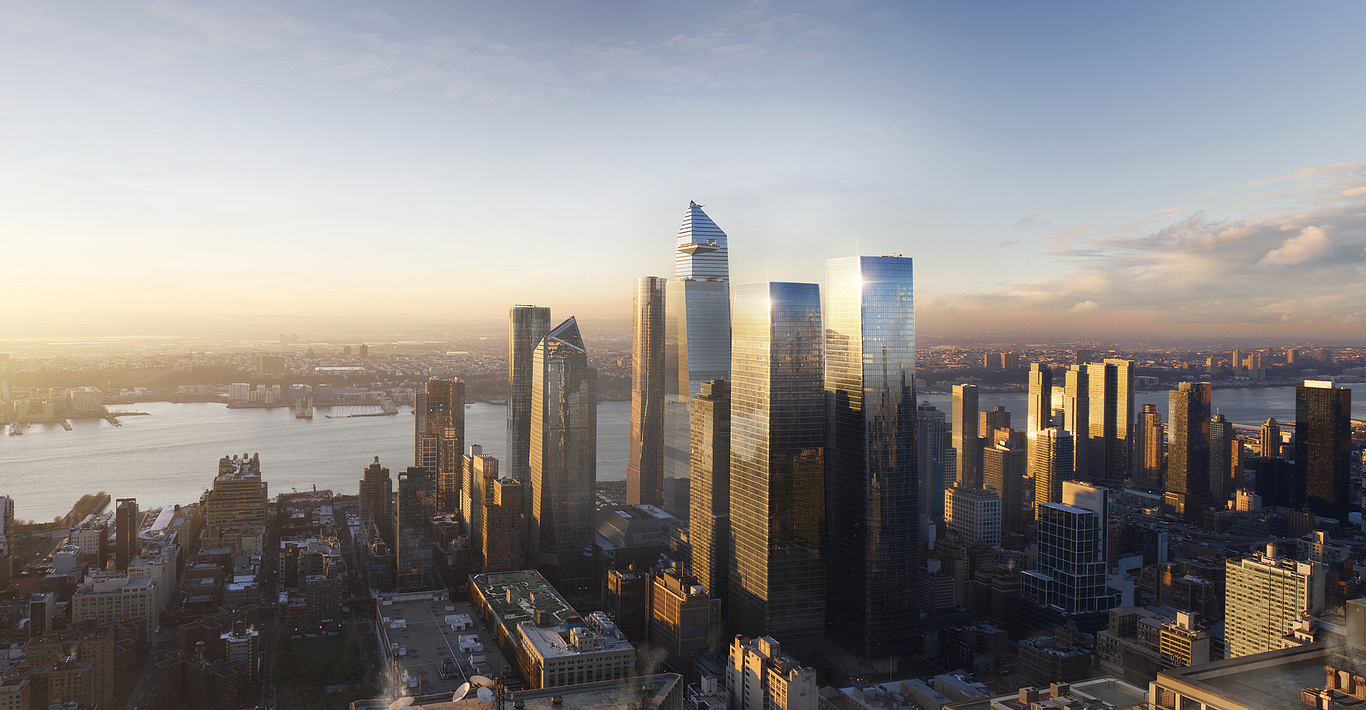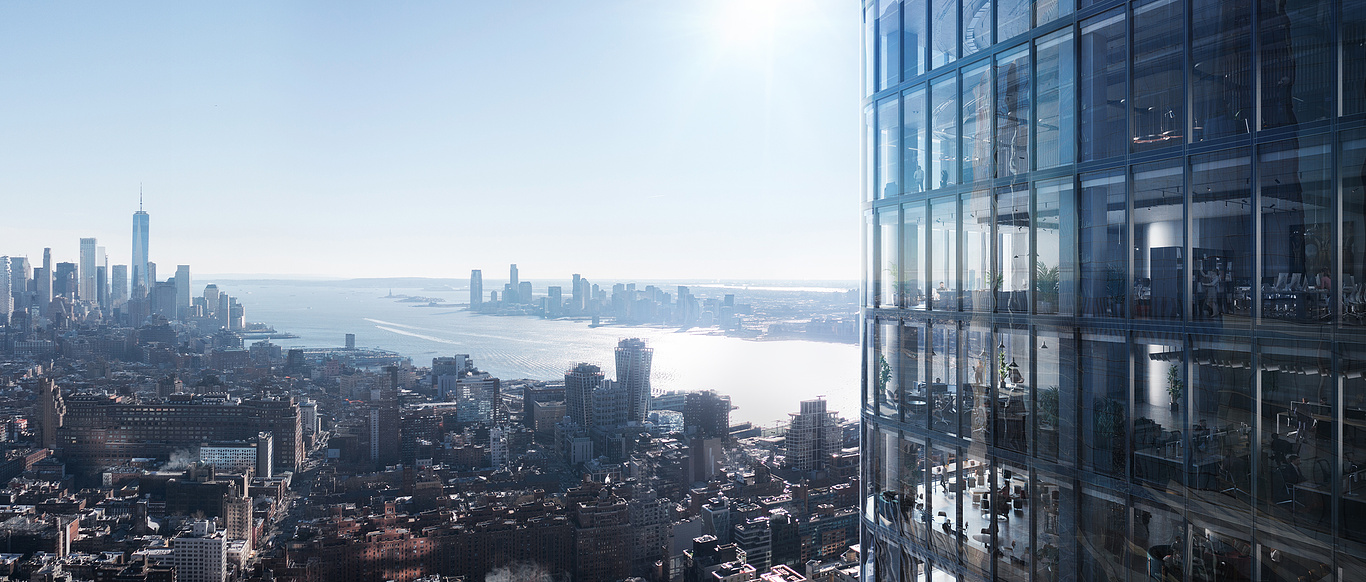
10 Questions With...
10 Questions with Elephant Skin
Elephant Skin stands at the forefront of architectural visualization, embodying a unique blend of creativity, technological prowess, and storytelling. Established with a passion for bringing architectural concepts to life, Elephant Skin is not just about rendering spaces; it's about crafting narratives that resonate. Through their meticulous attention to detail, innovative approach, and unwavering commitment to quality, they offer more than just visualizations—they offer experiences. Each project is a journey through meticulously designed spaces, where every texture, every shadow, and every light tells a story. Whether it's a serene residential haven or a bustling commercial hub, Elephant Skin captures the essence of each project, transforming visions into vivid realities.
In this interview with ES's co-founder and CEO Giovana Driessen, we dive into the world of Elephant Skin, where architecture meets artistry, and discover how they're redefining the boundaries of architectural visualization.
In this interview with ES's co-founder and CEO Giovana Driessen, we dive into the world of Elephant Skin, where architecture meets artistry, and discover how they're redefining the boundaries of architectural visualization.
1. What inspired the name "Elephant Skin" for your studio?
Elephant Skin was born with a post-it.
In 2015, I started to work for a well-known landscape architecture firm in Miami, US, and putting aside all my happiness to join the company, things were not all flowers and rainbows. I worked and worked and there were some days that it seemed it didn't matter how strong you were and how good your intentions are Things simply didn't happen.
During one of those tough days, my ex-boss came to me with THE post-it, put it on my screen, and said: "You need this. You need to develop your Elephant Skin. Focus and keep moving forward".
When the time came, we needed to decide what we would call the greatest company in the world, and Elephant Skin fit like a glove. That makes us remember every single day that the world is challenging, life can be unfair, but we are Elephants.
We remember every day where we came from. We are made of stories, which is why we are who we are, and that's how we will be what we want to be.
2. How did the studio get its start, and what was the vision behind its inception?
Elephant Skin was founded in the United States in 2017 by Henrique Driessen, an architect who had come to work in the country. While in Miami, Henrique worked for a real estate developer and identified a gap in communication between real estate players and their target audience. Therefore, he saw a market opportunity.
The idea was to centralize different services within the same agency and unify the identity and concept of real estate campaigns, utilizing brand storytelling, 3D technology and virtual reality to transform presentations for developers and create a sense of belonging and emotion in people. We brought internal info from the real estate market and put a lot of effort into understanding the creative world. We connected them!
Elephant Skin was born with a post-it.
In 2015, I started to work for a well-known landscape architecture firm in Miami, US, and putting aside all my happiness to join the company, things were not all flowers and rainbows. I worked and worked and there were some days that it seemed it didn't matter how strong you were and how good your intentions are Things simply didn't happen.
During one of those tough days, my ex-boss came to me with THE post-it, put it on my screen, and said: "You need this. You need to develop your Elephant Skin. Focus and keep moving forward".
When the time came, we needed to decide what we would call the greatest company in the world, and Elephant Skin fit like a glove. That makes us remember every single day that the world is challenging, life can be unfair, but we are Elephants.
We remember every day where we came from. We are made of stories, which is why we are who we are, and that's how we will be what we want to be.
2. How did the studio get its start, and what was the vision behind its inception?
Elephant Skin was founded in the United States in 2017 by Henrique Driessen, an architect who had come to work in the country. While in Miami, Henrique worked for a real estate developer and identified a gap in communication between real estate players and their target audience. Therefore, he saw a market opportunity.
The idea was to centralize different services within the same agency and unify the identity and concept of real estate campaigns, utilizing brand storytelling, 3D technology and virtual reality to transform presentations for developers and create a sense of belonging and emotion in people. We brought internal info from the real estate market and put a lot of effort into understanding the creative world. We connected them!
3. How do you approach blending reality and imagination in your visualizations?
The challenge is not just to capture the visual, but also any additional sensory experiences and subtle aspects that surround everyday life. 3D modeling in architecture recreates the imagination of the architect/ developer into what can be visualized and even felt.
It can be a great challenge to deliver a product that meets developers' expectations and satisfies customers' wishes. After all, the 3D artists need to consider all the dimensions of the project, the revelation of a unique concept, and the world of archviz possibilities at their fingertips.
The virtual world is capable of transporting consumers to another reality. Digital environments that are truly well built have the power to convey emotions and sensations long before customers can have the actual physical experience on-site. At Elephant Skin, artists enjoy freedom of creative expression. They deal directly with the challenges of each project and better themselves as they work in a state of perpetual exploration and learning.
4. What are the key challenges in architectural visualization today?
Architectural visualization today transcends mere renderings; it has evolved into a paramount asset within campaigns. We're witnessing clients increasingly grasping its significance. In Elephant Skin's early days, we began crafting traditional brochure presentations and promptly realized that a campaign's essence lies 80% in the images depicting the product. Therefore, we must market these images as integral elements of the campaign, not as standalone items. The project's narrative must be conveyed harmoniously with logos, branding, and all assets, including the images, in a seamless synergy.
Our industry, relative to others, is relatively new, making our primary
challenge, and current focus the sale of our service, not just a product. Clients should gain a holistic view of the campaign strategy and the CGI's value and applications.
Instead of haggling over image costs, we emphasize simplifying their lives and optimizing budget allocation.
Images sell when the story is properly crafted!
5. Can you walk us through your creative process for a typical project?
It is crucial to emphasize that our primary goal is always to ensure the success of our client's project. Therefore, a project should not only be visually appealing but must also make logical sense. At Elephant Skin, we are fortunate to start each project with a Playbook — a comprehensive study encompassing market analysis, product assessment, competitors, trends, target audience, and various other pertinent data.
The Playbook serves as our guiding document, enabling us to develop concepts and identities, assess references, create moodboards, and, most importantly, define the optimal creative strategy for each project.
In terms of imagery, for instance, we can discern whether to adopt a more minimalista approach, employ a more dramatic lighting scheme, or define the best composition to convey the most compelling story through that image. At Elephant Skin, attention to detail is paramount. We firmly believe that it is within the intricacies that the strongest connections with the audience are forged.
The challenge is not just to capture the visual, but also any additional sensory experiences and subtle aspects that surround everyday life. 3D modeling in architecture recreates the imagination of the architect/ developer into what can be visualized and even felt.
It can be a great challenge to deliver a product that meets developers' expectations and satisfies customers' wishes. After all, the 3D artists need to consider all the dimensions of the project, the revelation of a unique concept, and the world of archviz possibilities at their fingertips.
The virtual world is capable of transporting consumers to another reality. Digital environments that are truly well built have the power to convey emotions and sensations long before customers can have the actual physical experience on-site. At Elephant Skin, artists enjoy freedom of creative expression. They deal directly with the challenges of each project and better themselves as they work in a state of perpetual exploration and learning.
4. What are the key challenges in architectural visualization today?
Architectural visualization today transcends mere renderings; it has evolved into a paramount asset within campaigns. We're witnessing clients increasingly grasping its significance. In Elephant Skin's early days, we began crafting traditional brochure presentations and promptly realized that a campaign's essence lies 80% in the images depicting the product. Therefore, we must market these images as integral elements of the campaign, not as standalone items. The project's narrative must be conveyed harmoniously with logos, branding, and all assets, including the images, in a seamless synergy.
Our industry, relative to others, is relatively new, making our primary
challenge, and current focus the sale of our service, not just a product. Clients should gain a holistic view of the campaign strategy and the CGI's value and applications.
Instead of haggling over image costs, we emphasize simplifying their lives and optimizing budget allocation.
Images sell when the story is properly crafted!
5. Can you walk us through your creative process for a typical project?
It is crucial to emphasize that our primary goal is always to ensure the success of our client's project. Therefore, a project should not only be visually appealing but must also make logical sense. At Elephant Skin, we are fortunate to start each project with a Playbook — a comprehensive study encompassing market analysis, product assessment, competitors, trends, target audience, and various other pertinent data.
The Playbook serves as our guiding document, enabling us to develop concepts and identities, assess references, create moodboards, and, most importantly, define the optimal creative strategy for each project.
In terms of imagery, for instance, we can discern whether to adopt a more minimalista approach, employ a more dramatic lighting scheme, or define the best composition to convey the most compelling story through that image. At Elephant Skin, attention to detail is paramount. We firmly believe that it is within the intricacies that the strongest connections with the audience are forged.
6. How has technology changed the landscape of architectural visualization?
Technology is evolving daily, and we are witnessing the astonishing AI revolution. When wielded effectively, AI becomes a companion to artists and creative visionaries, enhancing their capabilities. Unreal Engine, in particular, continually changes the game and promises even more in the future. However, we firmly believe that technology will not replace individuals, as many fear. Instead, it will give rise to new roles and possibilities. AI is unquestionably here to stay, and those who master these tools early will lead the charge in spearheading revolutions within our field.
7. Could you share insights on a particularly challenging or unique project?
Our greatest challenge is not merely growth or creativity across diverse projects and locations; it's avoiding complacency. It's far too easy to settle into a state of
contentment and say, "We're okay." Whether a company has 5, 20, or 100 members, the imperative remains the same: delivering projects to the highest standards. Yet, the landscape is ever-evolving, different today than it was five years ago, and set to change further in the next five.
We cannot afford lethargy; we must continuously reinvent ourselves. Courageously embracing challenges, acknowledging that growth doesn't mean abandoning our small-business mentality, is our daily quest. We strive to be better, lead transformations, adopt new tools, and, most importantly, listen to one another. People are pivotal, and together, we can redefine the game.
Technology is evolving daily, and we are witnessing the astonishing AI revolution. When wielded effectively, AI becomes a companion to artists and creative visionaries, enhancing their capabilities. Unreal Engine, in particular, continually changes the game and promises even more in the future. However, we firmly believe that technology will not replace individuals, as many fear. Instead, it will give rise to new roles and possibilities. AI is unquestionably here to stay, and those who master these tools early will lead the charge in spearheading revolutions within our field.
7. Could you share insights on a particularly challenging or unique project?
Our greatest challenge is not merely growth or creativity across diverse projects and locations; it's avoiding complacency. It's far too easy to settle into a state of
contentment and say, "We're okay." Whether a company has 5, 20, or 100 members, the imperative remains the same: delivering projects to the highest standards. Yet, the landscape is ever-evolving, different today than it was five years ago, and set to change further in the next five.
We cannot afford lethargy; we must continuously reinvent ourselves. Courageously embracing challenges, acknowledging that growth doesn't mean abandoning our small-business mentality, is our daily quest. We strive to be better, lead transformations, adopt new tools, and, most importantly, listen to one another. People are pivotal, and together, we can redefine the game.
8. What are the future trends you foresee in this industry?
The real estate industry has long been perceived as dull, old-fashioned, and
monotonous – in reality, because people forget that the market creates a product. A product is meant for people, and it's dynamic; people have to like it. This scarcity of fresh perspectives led to stagnation in an industry that should be constantly evolving to meet customers' changing needs.
When we established Elephant Skin, we recognized that the real estate market was in dire need of attention, respect, and dedicated professionals who truly cared about its potential. Our distinctiveness lies in our specialization and genuine concern for the markets we operate in. Elephant Skin is committed to getting deeply involved in projects, understanding each market's unique characteristics, and revolutionizing the way real estate products are developed and sold.
It's time for the real estate market to embrace creative intelligence to a much greater extent, put the customer at the center of everything it does, and make the process of buying and selling real estate more accessible and attractive to everyone. It's about how you can sit down and tell a story that truly connects. Storytelling has become an essential aspect of marketing in the real estate industry. In the past, the focus was primarily on highlighting the physical attributes of a property, such as its location, size, and amenities. However, today, real estate developers have started to recognize the power of storytelling in attracting and engaging potential buyers. If the industry doesn't adapt to the new demands of the market, it risks being left behind.
9. How do you ensure client satisfaction and manage expectations in such a
detail-oriented field?
Above all, we must steadfastly believe in what we are undertaking. Our projects are conceived first and foremost for ourselves and subsequently tailored for our clients. If we are not entirely satisfied with what we are developing, we return to the drawing board and revise until we take pride in our work. We engage with a clientele of the utmost discerning standards, used to nothing but the finest, and rarely easily impressed.
A diligent study of our target audience is imperative, delving into understanding their mindset, worldview, and preferences in leisure and dining. We must immerse ourselves in their perspective. This sets the stage for the second challenge: ensuring architects take pride in their own projects. We collaborate with highly esteemed architects who are deeply attached to their creations. Part of our task is to familiarize ourselves with them and comprehend how we can best represent their projects. Ultimately, our work boils down to skillfully narrating stories in a tone that resonates, leaving a lasting impact on all those 'listeners' who encounter the final outcome of our efforts.
The real estate industry has long been perceived as dull, old-fashioned, and
monotonous – in reality, because people forget that the market creates a product. A product is meant for people, and it's dynamic; people have to like it. This scarcity of fresh perspectives led to stagnation in an industry that should be constantly evolving to meet customers' changing needs.
When we established Elephant Skin, we recognized that the real estate market was in dire need of attention, respect, and dedicated professionals who truly cared about its potential. Our distinctiveness lies in our specialization and genuine concern for the markets we operate in. Elephant Skin is committed to getting deeply involved in projects, understanding each market's unique characteristics, and revolutionizing the way real estate products are developed and sold.
It's time for the real estate market to embrace creative intelligence to a much greater extent, put the customer at the center of everything it does, and make the process of buying and selling real estate more accessible and attractive to everyone. It's about how you can sit down and tell a story that truly connects. Storytelling has become an essential aspect of marketing in the real estate industry. In the past, the focus was primarily on highlighting the physical attributes of a property, such as its location, size, and amenities. However, today, real estate developers have started to recognize the power of storytelling in attracting and engaging potential buyers. If the industry doesn't adapt to the new demands of the market, it risks being left behind.
9. How do you ensure client satisfaction and manage expectations in such a
detail-oriented field?
Above all, we must steadfastly believe in what we are undertaking. Our projects are conceived first and foremost for ourselves and subsequently tailored for our clients. If we are not entirely satisfied with what we are developing, we return to the drawing board and revise until we take pride in our work. We engage with a clientele of the utmost discerning standards, used to nothing but the finest, and rarely easily impressed.
A diligent study of our target audience is imperative, delving into understanding their mindset, worldview, and preferences in leisure and dining. We must immerse ourselves in their perspective. This sets the stage for the second challenge: ensuring architects take pride in their own projects. We collaborate with highly esteemed architects who are deeply attached to their creations. Part of our task is to familiarize ourselves with them and comprehend how we can best represent their projects. Ultimately, our work boils down to skillfully narrating stories in a tone that resonates, leaving a lasting impact on all those 'listeners' who encounter the final outcome of our efforts.
10. Lastly, where do you see the Elephants in the next 5 years, and what are your goals for the studio's future?
Elephant Skin is on the path to reinventing how people buy, look for new projects, and create a new generation of real estate developers.
Within 5 years, our goal is to become the world’s biggest platform for real estate developments, with a presence on all continents, and become the go-to place to sell and search for new projects.
You can see more of ES's amazing work on their website.
Elephant Skin is on the path to reinventing how people buy, look for new projects, and create a new generation of real estate developers.
Within 5 years, our goal is to become the world’s biggest platform for real estate developments, with a presence on all continents, and become the go-to place to sell and search for new projects.
You can see more of ES's amazing work on their website.

Elephant Skin
WELCOME TO ELEPHANT SKIN!/We are a skilled and nimble creative agency that focuses exclusively on real estate development projects
You must be logged in to post a comment. Login here.
About this article
In our latest series, we're pulling up chairs alongside some of the most distinguished and captivating studios from across the world. This month, our conversation brought us to Elephant Skin, a studio that's been redefining architectural visualization with its unique blend of storytelling, technological innovation, and artistic prowess. Join us as we delve into the ethos and craft behind Elephant Skin, exploring how they transform architectural visions into vivid, emotional experiences that resonate deeply with viewers.
visibility537
favorite_border0
mode_comment0


